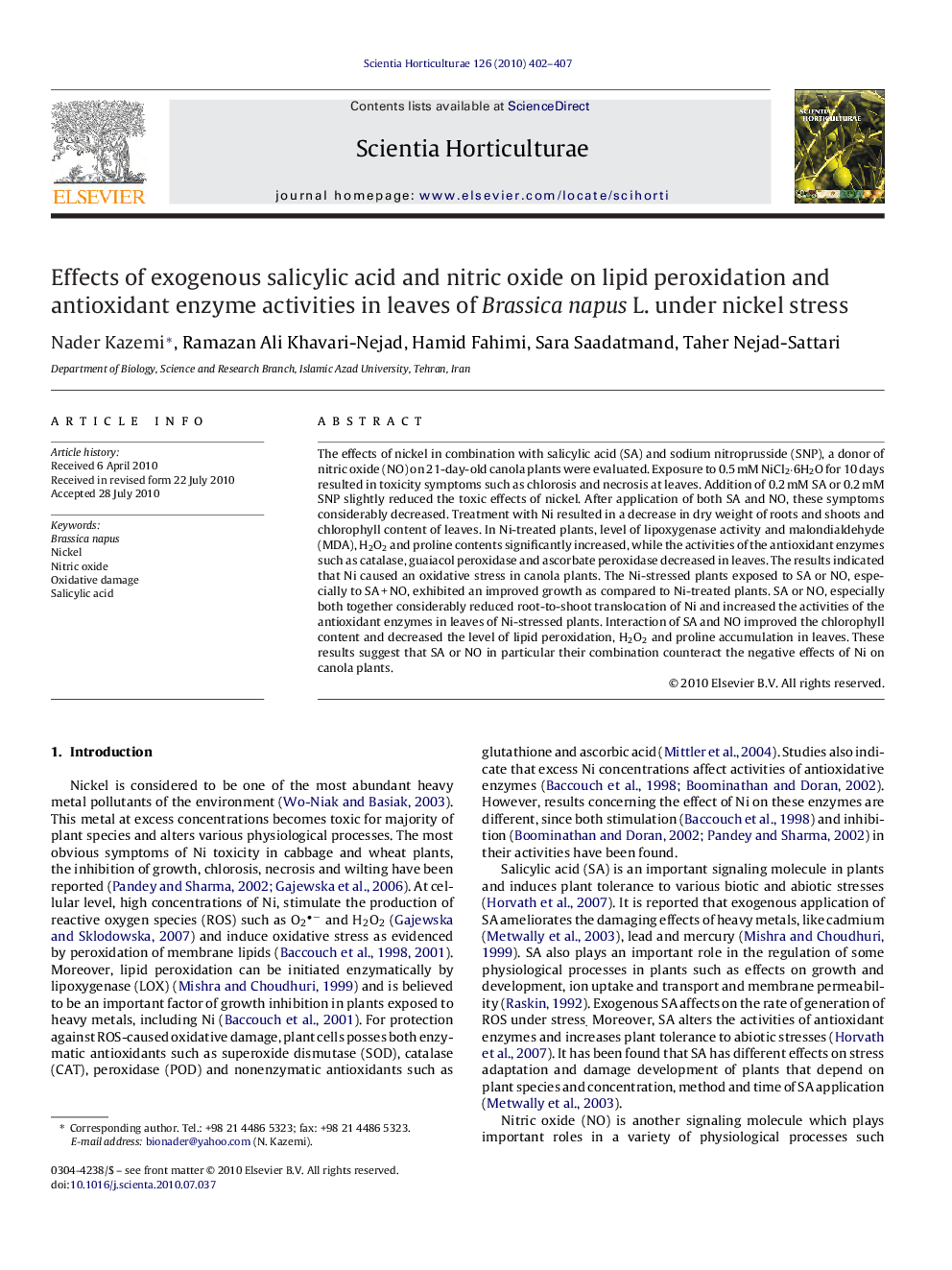| کد مقاله | کد نشریه | سال انتشار | مقاله انگلیسی | نسخه تمام متن |
|---|---|---|---|---|
| 4568341 | 1331295 | 2010 | 6 صفحه PDF | دانلود رایگان |

The effects of nickel in combination with salicylic acid (SA) and sodium nitroprusside (SNP), a donor of nitric oxide (NO) on 21-day-old canola plants were evaluated. Exposure to 0.5 mM NiCl2·6H2O for 10 days resulted in toxicity symptoms such as chlorosis and necrosis at leaves. Addition of 0.2 mM SA or 0.2 mM SNP slightly reduced the toxic effects of nickel. After application of both SA and NO, these symptoms considerably decreased. Treatment with Ni resulted in a decrease in dry weight of roots and shoots and chlorophyll content of leaves. In Ni-treated plants, level of lipoxygenase activity and malondialdehyde (MDA), H2O2 and proline contents significantly increased, while the activities of the antioxidant enzymes such as catalase, guaiacol peroxidase and ascorbate peroxidase decreased in leaves. The results indicated that Ni caused an oxidative stress in canola plants. The Ni-stressed plants exposed to SA or NO, especially to SA + NO, exhibited an improved growth as compared to Ni-treated plants. SA or NO, especially both together considerably reduced root-to-shoot translocation of Ni and increased the activities of the antioxidant enzymes in leaves of Ni-stressed plants. Interaction of SA and NO improved the chlorophyll content and decreased the level of lipid peroxidation, H2O2 and proline accumulation in leaves. These results suggest that SA or NO in particular their combination counteract the negative effects of Ni on canola plants.
Research highlightsIn recent years, not enough information was available concerning the alleviating of Ni toxicity in plants. The purpose of the present study was to examine Ni-induced toxicity in canola plants and the possible protective role of exogenous NO and/or SA against the Ni-induced oxidative stress.
Journal: Scientia Horticulturae - Volume 126, Issue 3, 30 September 2010, Pages 402–407